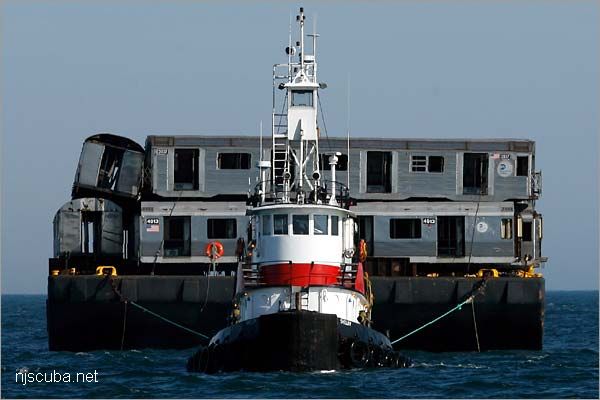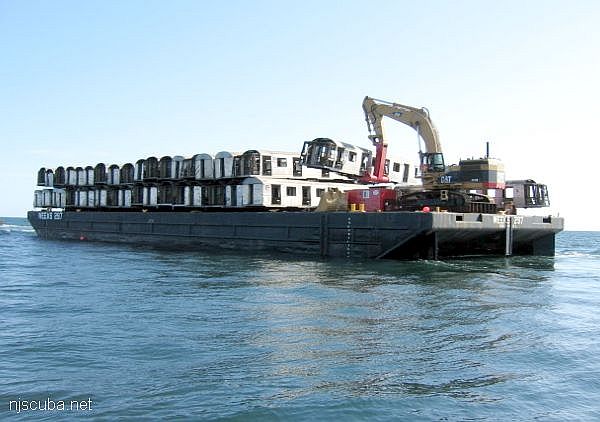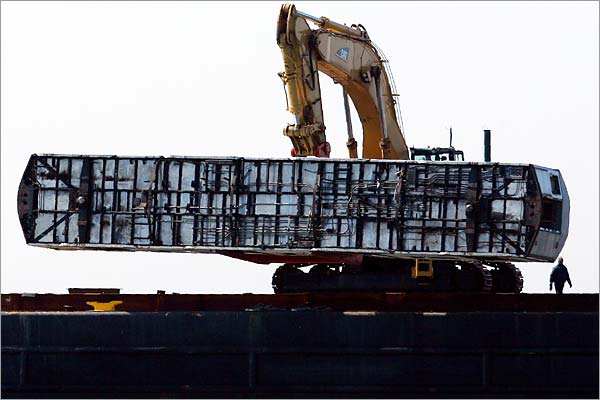Brightliner Subway Cars (1/3)

- Type:
- ~100 "Brightliner" subway cars - NYC Subway system
- Built:
- 1963-1964 - Budd Company - Model R32 # 3350-3949
1966-1967 - St. Louis Car - Model R38 # 3950-4149
1967-1969 - St. Louis Car - Model R40 # 4150-4349
1969-1970 - St. Louis Car - Model R42 # 4550-4949 - Specs:
- ( 60 x 10 ft ) 10 tons ( all, typical, body only )
- Sunk:
- 44 cars were sunk on Atlantic City Reef on April 3, 2008
more in Cape May reef and Delaware reefs - Sponsor:
- New York City Metropolitan Transportation Authority ( MTA )
- GPS:
- too many to list, and all gone anyway
- Depth:
- Depths vary by location

Update 2020
The "Brightliners" went to pieces unexpectedly fast, and there is almost certainly nothing left of them by now.
On April 3, 2008, 44 decommissioned stainless steel subway cars were deployed on the Atlantic City Reef site as part of the Artificial Reef Program. The cars are placed in a tight circle pattern to better accommodate divers. More cars were deployed on the Cape May reef, for a total of about 100. When the cars were found to have completely fallen apart after only several months, plans to deploy another 500 were abandoned.

After being stripped of windows and doors, it will be difficult to tell one type from another. The R40s and R42s will also lose their fiberglass end-caps. Compared to the Redbirds, these cars are 10 feet longer, and over a foot wider, with much heavier stainless steel construction.




Brightliners were named for their gleaming unpainted stainless-steel finish and overall modern appearance, which contrasted strongly with the painted cars of previous generations, such as the Redbirds.


